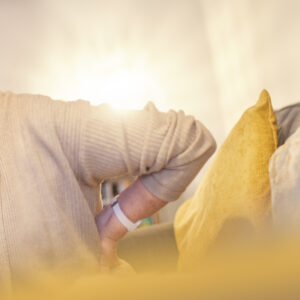How to Lower Your Risk of Osteoporosis
May 24, 2021 | Prevention of Illness and Management of Chronic Conditions

Bones feel solid, but the inside of a bone is actually filled with holes like a honeycomb. Bone tissues are broken down and rebuilt all the time. While some cells build new bone tissue, others dissolve bone and release the minerals inside.
As we get older, we begin to lose more bone than we build. The tiny holes within bones grow, and the solid outer layer becomes thinner. In other words, our bones get less dense. Hard bones turn spongy, and spongy bones turn spongier. If this loss of bone density goes too far, it’s called osteoporosis.
The link with falls and disability
It’s normal for bones to break in bad accidents. If your bones are dense enough, they should be able to withstand most falls. Bones weakened by osteoporosis, though, are more likely to break. Broken bones can lead to serious problems for seniors. For example, the hip is a common site for osteoporosis, and hip fractures can lead to a downward spiral of disability and loss of independence.
When to get screening
Experts suggest that women start getting screened for osteoporosis at age 65. Women younger than age 65 who are at high risk for fractures should also be screened. Men should discuss their risk factors, and screening recommendations, with their doctor.
Fortunately, there’s a lot you can do to lower your risk of osteoporosis:
Get plenty of calcium and vitamin D. Calcium is a mineral that helps bones stay strong. The best sources include milk and milk products, and dark green leafy vegetables like kale and collard greens. Women over age 50 need 1,200 mg of calcium a day. Men need 1,000 mg a day from ages 51 to 70 and 1,200 mg a day after that.
Vitamin D helps your body absorb calcium. As you grow older, your body needs more vitamin D, which is made by your skin when you’re in the sun. You can also get vitamin D from dietary supplements and from certain foods, such as milk, eggs, fatty fish, and fortified cereals.
Exercise. Exercise, especially weight-bearing exercise, helps bones, too. Weight-bearing exercises include jogging, walking, tennis, and dancing. The pull of muscles is a reminder to the cells in your bones that they need to keep the tissue dense.
Don’t smoke. Smoking weakens bones. Heavy drinking does too—and makes people more likely to fall.
Protect yourself from falls. More than 2 million so-called fragility fractures (which wouldn’t have happened if the bones had been stronger) occur nationwide each year. Many things can affect the risk for a fall, such as how good a person’s balance is and how many trip hazards are in the environment. The kind of fall matters, too. Wrist fractures often occur when a person falls forward or backward. Hip fractures often arise when a person falls to the side.
“That’s why exercise that builds balance and confidence is very good at preventing fractures,” says Dr. Joan McGowan, an expert on osteoporosis at the National Institutes of Health. For example, she says, tai chi won’t provide the loads needed to build bone mass, but it can increase balance and coordination—and make you more likely to catch yourself before you topple.
Talk to your doctor
This information is not meant to replace the guidance of your healthcare provider. If you’re concerned about your bone health, talk to your doctor and ask about getting a bone density test.
Source: National Institutes of Health

